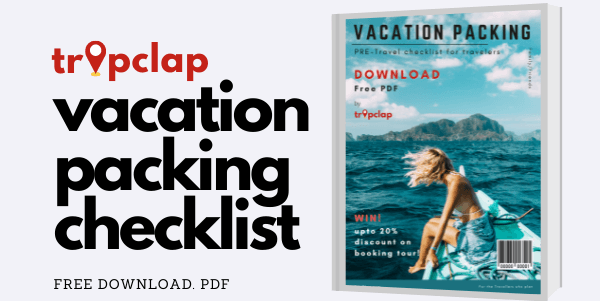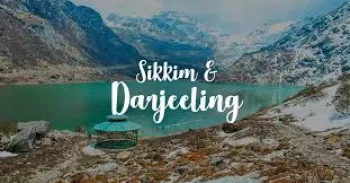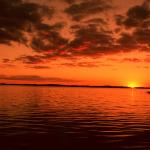Dzongri Trek in Sikkim: A Himalayan Adventure
Nestled in the breathtaking Himalayas, the Dzongri Trek in Sikkim offers adventure enthusiasts a mesmerizing journey through stunning landscapes, pris - Tripclap

Nestled in the breathtaking Himalayas, the Dzongri Trek in Sikkim offers adventure enthusiasts a mesmerizing journey through stunning landscapes, pristine forests, and majestic mountain ranges. This trek is renowned for its panoramic views of the world's highest peaks, including the mighty Kanchenjunga.
With its challenging trails, rich biodiversity, and cultural encounters, the Dzongri Trek promises an unforgettable experience for nature lovers and avid trekkers alike.
Table of Content
- Overview of the trek:
- Itinerary for the Dzongri Trek:
- Budget
- Frequently asked question on Dzongri trek
- 1. Is prior trekking experience necessary for the Dzongri Trek?
- 2. What is the best time to undertake the Dzongri Trek?
- 3. What permits are required for the Dzongri Trek?
- 4. Are there accommodation options along the trekking route?
- 5. Do I need a guide for the Dzongri Trek?
- 6. What is the level of difficulty for the Dzongri Trek?
- 7. Is altitude sickness a concern on the Dzongri Trek?
- 8. Are there emergency facilities and communication available during the trek?
Per Person
15,000
*EXCLUDING APPLICABLE TAXES 3.7 Ratings
( 5 Reviews )
( 5 Reviews )
Per Person
24,500
*EXCLUDING APPLICABLE TAXES 5.0 Ratings
( 21 Reviews )
( 21 Reviews )
Per Person
19,000
*EXCLUDING APPLICABLE TAXES 3.7 Ratings
( 5 Reviews )
( 5 Reviews )
Per Person
23,500
*EXCLUDING APPLICABLE TAXES 5.0 Ratings
( 21 Reviews )
( 21 Reviews )
Per Person
25,799
*EXCLUDING APPLICABLE TAXES 5.0 Ratings
( 21 Reviews )
( 21 Reviews )
Per Person
32,500
*EXCLUDING APPLICABLE TAXES 5.0 Ratings
( 21 Reviews )
( 21 Reviews )
Per Person
26,799
*EXCLUDING APPLICABLE TAXES 5.0 Ratings
( 21 Reviews )
( 21 Reviews )
Per Person
19,500
*EXCLUDING APPLICABLE TAXES 5.0 Ratings
( 21 Reviews )
( 21 Reviews )
Per Person
28,900
*EXCLUDING APPLICABLE TAXES 5.0 Ratings
( 21 Reviews )
( 21 Reviews )
Per Person
26,000
*EXCLUDING APPLICABLE TAXES 3.7 Ratings
( 5 Reviews )
( 5 Reviews )
Overview of the trek:
 View Gallery - 4
View Gallery - 4 The Gateway to the Himalayas:
Located in the northeastern part of India, Sikkim is a paradise for trekkers. The Dzongri Trek serves as an excellent introduction to the region's unparalleled natural beauty. The adventure begins from the town of Yuksom, where trekkers embark on a journey through thick rhododendron forests, charming villages, and serene monasteries.
Awe-Inspiring Landscapes:
As trekkers ascend higher, they are treated to an ever-changing landscape of snow-capped peaks, alpine meadows and glacial lakes. The Dzongri viewpoint, situated at an altitude of approximately 4,000 meters, offers a jaw-dropping panoramic vista of towering mountains, including the third highest peak in the world, Mount Kanchenjunga. The sight of the sun painting the peaks in hues of gold during sunrise is a sight to behold and captures the essence of the trek.
Flora and Fauna:
The Dzongri region is blessed with abundant biodiversity, housing a variety of flora and fauna. Trekking through the Kanchenjunga National Park, a UNESCO World Heritage site, provides an opportunity to spot rare species like the red panda, Himalayan black bear, and elusive snow leopard. The trail is adorned with vibrant rhododendron blooms in the spring season, making it a photographer's delight.
Cultural Encounters:
Sikkim is known for its rich cultural heritage, and the Dzongri Trek allows trekkers to immerse themselves in the local way of life. Along the route, trekkers can interact with friendly villagers from different ethnic communities, such as the Lepchas and Bhutias, gaining insights into their customs, traditions, and daily routines. This cultural exchange adds depth and richness to the trekking experience.
Physical Challenge and Preparation:
The Dzongri Trek is a moderately challenging trek, requiring a good level of fitness and stamina. Trekkers should undertake preparatory exercises and conditioning to ensure they are physically ready for the trek. It is advisable to acclimatize in Yuksom for a day or two before starting the trek to minimize the risk of altitude sickness.
Best Time to Trek:
The ideal time to undertake the Dzongri Trek is from March to May and September to November. During these months, the weather is generally favorable, with clear skies and mild temperatures. However, trekkers should be prepared for unpredictable weather conditions in the mountains and carry appropriate gear and clothing.
Responsible Trekking:
Preserving the pristine beauty of the Himalayas is of utmost importance. Trekkers should adhere to responsible trekking practices, such as carrying their waste back, using eco-friendly products, and respecting local customs and wildlife habitats. Engaging with local guides and support staff not only enhances the experience but also contributes to the local economy.
Conclusion:
The Dzongri Trek in Sikkim is a dream adventure for nature enthusiasts seeking an extraordinary experience amidst the grandeur of the Himalayas. From challenging trails to breathtaking vistas, this trek offers a perfect blend of natural beauty, cultural encounters, and physical exert
Itinerary for the Dzongri Trek:
 View Gallery - 4
View Gallery - 4 Here's a suggested itinerary for the Dzongri Trek in Sikkim:
Day 1: Arrival in Yuksom
- Arrive in Yuksom, the starting point of the Dzongri Trek.
- Explore the charming town, visit the Norbugang Chorten and Dubdi Monastery.
- Acclimatize to the altitude and relax for the day.
Day 2: Yuksom to Bakhim (3-4 hours)
- Begin the trek from Yuksom and follow the trail through dense forests of rhododendron and magnolia.
- Pass by the beautiful Tshoka village, inhabited by the Bhutia community.
- Reach Bakhim, a scenic campsite surrounded by lush greenery.
Day 3: Bakhim to Dzongri (6-7 hours)
- Start early and continue the ascent towards Dzongri.
- Traverse through thick forests, crossing several streams and wooden bridges.
- Reach Dzongri, situated at an altitude of around 4,000 meters.
- Enjoy breathtaking views of the Kanchenjunga range and spend the night at the campsite.
Day 4: Acclimatization Day at Dzongri
- This day is dedicated to acclimatization and exploration.
- Take a short hike to Dzongri viewpoint for stunning sunrise views of the Himalayas.
- Explore the surrounding area and enjoy the serene mountain ambiance.
- Return to the campsite and rest for the night.
Day 5: Dzongri to Thansing via Kokchurong (7-8 hours)
- Begin the day's trek towards Thansing, passing through picturesque meadows and glacial valleys.
- Stop at Kokchurong, a scenic spot with a beautiful river and mesmerizing views.
- Continue the trek and reach Thansing, a high-altitude campsite surrounded by mountains.
Day 6: Thansing to Lamuney and back (4-5 hours)
- Trek to Lamuney, a glacial lake located at the base of Mount Pandim.
- Enjoy the breathtaking views of the snow-capped peaks and the tranquil lake.
- After spending some time at Lamuney, return to Thansing for an overnight stay.
Day 7: Thansing to Tshoka via Dzongri (8-9 hours)
- Begin the return journey, retracing the path through Dzongri.
- Descend through the forests and enjoy the lush green landscapes.
- Reach Tshoka, a village with beautiful mountain views, and set up camp for the night.
Day 8: Tshoka to Yuksom (5-6 hours)
- Descend further from Tshoka to Yuksom, enjoying the final leg of the trek.
- Bid farewell to the mountains and reflect on the incredible journey.
- Arrive in Yuksom and celebrate the successful completion of the Dzongri Trek.
Day 9: Departure from Yuksom
- Depart from Yuksom with fond memories of the Dzongri Trek and the beautiful landscapes of Sikkim.
Note: The itinerary provided is a general guideline and can be subject to changes based on factors such as weather conditions, group pace, and individual preferences. It is important to consult with local trekking agencies and experienced guides to plan and customize the itinerary according to your specific needs and abilities.
Budget
 View Gallery - 4
View Gallery - 4 The budget for the Dzongri Trek can vary depending on various factors, such as the duration of the trek, mode of transportation, accommodation choices, and additional expenses.
Here is a breakdown of the typical costs involved:
Transportation:
Flights: If you're traveling from outside of Sikkim, the cost of flights to the nearest airport, Bagdogra Airport in West Bengal, will be a significant expense.
Local Transport: From Bagdogra Airport or nearby Siliguri, you can hire a taxi or take a shared jeep to reach Yuksom, the starting point of the trek.
Permits and Fees:
Trekking Permits: Foreigners require a Restricted Area Permit (RAP) to enter Sikkim. It can be obtained through a registered travel agency or through the Sikkim Tourism website.
Indian nationals may need an Inner Line Permit (ILP) if traveling beyond Yuksom.
National Park Fees: Entry fees are required for the Kanchenjunga National Park, which is part of the trekking route.
Accommodation:
Tea Houses/Lodges: Along the trekking route, basic tea houses and lodges are available for accommodation. The cost per night can vary depending on the facilities provided, ranging from budget to mid-range options.
Camping: If you prefer camping, you can rent camping equipment or hire a local guide or agency to arrange for camping sites and equipment.
Food and Water:
Meals: Most tea houses and lodges offer meals, including breakfast, lunch, and dinner. The cost of meals can vary, with simple local meals being more affordable.
Snacks and Water: It is advisable to carry snacks and bottled water for the trek, as prices may increase at higher altitudes.
Guide and Porter:
Hiring a guide and porter is optional but can enhance your trekking experience and ease the physical load. The cost will depend on the duration of the trek and the services provided.
Miscellaneous Expenses:
Trekking Gear: If you don't have your own trekking gear, you may need to rent or purchase essential items such as trekking poles, sleeping bags, and insulated clothing.
Travel Insurance: It is highly recommended to have travel insurance that covers trekking and emergency medical expenses.
Souvenirs and Personal Expenses: You may want to budget for additional expenses such as souvenirs, extra snacks, and personal expenses during the trek.
It is important to research and compare prices from different trekking agencies, tea houses, and accommodation options to find the best value for your budget. The total cost of the Dzongri Trek can vary, but it is advisable to plan a budget range of approximately (INR 35000 +) $600 to $1000 or more per person, depending on the level of comfort and services you choose.
Frequently asked question on Dzongri trek
1. Is prior trekking experience necessary for the Dzongri Trek?
While prior trekking experience is not mandatory, it is advisable to have a reasonable level of fitness and some basic hiking experience. The Dzongri Trek involves moderate to challenging terrain and altitude gain, so being physically prepared will enhance your trekking experience.
2. What is the best time to undertake the Dzongri Trek?
The best time to do the Dzongri Trek is from March to May and September to November. These months offer pleasant weather, clear views of the mountains, and blooming flora.
3. What permits are required for the Dzongri Trek?
Foreigners require a Restricted Area Permit (RAP) to enter Sikkim, which can be obtained through a registered travel agency or the Sikkim Tourism website. Indian nationals may need an Inner Line Permit (ILP) if traveling beyond Yuksom.
4. Are there accommodation options along the trekking route?
Yes, there are basic tea houses and lodges available at various points along the Dzongri Trek. These accommodations provide basic amenities such as beds, blankets, and meals. Camping is also an option, and you can either bring your own equipment or hire it locally.
5. Do I need a guide for the Dzongri Trek?
While it is not mandatory to hire a guide, it is highly recommended, especially for first-time trekkers or those unfamiliar with the region. A local guide can provide valuable insights, ensure your safety, and navigate the trails effectively.
6. What is the level of difficulty for the Dzongri Trek?
The Dzongri Trek is considered moderately challenging. The trail involves steep ascents, rocky sections, and some long days of trekking. Proper physical fitness, acclimatization, and preparation are necessary to tackle the challenges of the trek.
7. Is altitude sickness a concern on the Dzongri Trek?
Altitude sickness can be a potential risk on the Dzongri Trek, as the trail reaches altitudes above 4,000 meters. It is crucial to acclimatize properly by taking rest days, hydrating well, and ascending gradually. If symptoms of altitude sickness persist, it is advisable to descend to a lower altitude and seek medical assistance.
8. Are there emergency facilities and communication available during the trek?
Emergency facilities and communication options are limited along the trekking route. It is recommended to carry a basic first aid kit, have travel insurance that covers trekking, and inform your family or friends about your itinerary. Local guides are trained to handle emergencies and can arrange for evacuation if required.

Debalina Deb Roy
A seasoned travel writer with a passion for exploring off beat destinations and uncovering the hidden gems. My ultimate goal is to inspire people to step out of their comfort zones and explore the world.
Explore best popularTour Packages
Tripclap connects you with top travel agents
Compare Custom Quotes and get the best package deal
1
Trusted Network Of 8000+ Agents.
2
Book everything together, including stay & transport.
3
Compare agent profiles & verified reviews.
How It Works
Compare Custom Quotes from Top Travel Agents.

Tell us about your trip

Get Custom quotes from top agents.

Choose the package you like
Latest Destinations : -
• Tokyo • Kolli Hills • Ramgarh • Sundarbans • Bhandardara • Srirangapatna • Kutrallam • Bellikkal • Batu Pahat • Sepilok • Malaga • Nagoya • Seremban • Jodhpur • Talasari Beach • Busan • Koh Chang • Shoja • Wellington • Mui Ne • Chanthaburi • Pattaya • Kuching • Vizianagaram • Narnaul • Igatpuri • Sa Dec • Bir • Jammu • Bhatinda • Kashid • Seville • Baltal • Pauri Garhwal • BR Hills • Nrityagram • Petaling Jaya • Glasgow • Kottayam • Klang • Nha Trang • Peermede • Malshej Ghat • Panchkula • Highlands • Pushkar • Shimoga • Mararikulam • Sundarapandiapuram • Phuket
• Tokyo • Kolli Hills • Ramgarh • Sundarbans • Bhandardara • Srirangapatna • Kutrallam • Bellikkal • Batu Pahat • Sepilok • Malaga • Nagoya • Seremban • Jodhpur • Talasari Beach • Busan • Koh Chang • Shoja • Wellington • Mui Ne • Chanthaburi • Pattaya • Kuching • Vizianagaram • Narnaul • Igatpuri • Sa Dec • Bir • Jammu • Bhatinda • Kashid • Seville • Baltal • Pauri Garhwal • BR Hills • Nrityagram • Petaling Jaya • Glasgow • Kottayam • Klang • Nha Trang • Peermede • Malshej Ghat • Panchkula • Highlands • Pushkar • Shimoga • Mararikulam • Sundarapandiapuram • Phuket
Best Selling Domestic Tour Packages : -
Kashmir Tour Packages Andaman Tour Packages Kerala Tour Packages Shimla Tour Packages Manali Tour Packages Sikkim Tour Packages Uttarakhand Tour Packages Rajasthan Tour Packages Chardham Tour Packages Gujarat Tour Packages Rameswaram Tour Packages Gangtok Tour Packages Goa Tour Packages Jaipur Tour Packages Ooty Tour Packages Jim Corbett Tour Packages Mussoorie Tour Packages Kanyakumari Tour Packages Meghalaya Tour Packages Ladakh Tour Packages
Kashmir Tour Packages Andaman Tour Packages Kerala Tour Packages Shimla Tour Packages Manali Tour Packages Sikkim Tour Packages Uttarakhand Tour Packages Rajasthan Tour Packages Chardham Tour Packages Gujarat Tour Packages Rameswaram Tour Packages Gangtok Tour Packages Goa Tour Packages Jaipur Tour Packages Ooty Tour Packages Jim Corbett Tour Packages Mussoorie Tour Packages Kanyakumari Tour Packages Meghalaya Tour Packages Ladakh Tour Packages
Best Selling International Tour Packages : -
Dubai Tour Packages Bali Tour Packages Singapore Tour Packages Thailand Tour Packages Maldives Tour Packages Bhutan Tour Packages Vietnam Tour Packages Mauritius Tour Packages Nepal Tour Packages Europe Tour Packages Sri lanka Tour Packages Turkey Tour Packages Malaysia Tour Packages Azerbaijan Tour Packages
Dubai Tour Packages Bali Tour Packages Singapore Tour Packages Thailand Tour Packages Maldives Tour Packages Bhutan Tour Packages Vietnam Tour Packages Mauritius Tour Packages Nepal Tour Packages Europe Tour Packages Sri lanka Tour Packages Turkey Tour Packages Malaysia Tour Packages Azerbaijan Tour Packages
Certified
We accept (more)
Members of
Media Recognition
Trusted Partners
Award
Copyrights © TripClap. All Rights Reserved







 May
May June
June July
July August
August September
September October
October November
November December
December January
January February
February March
March April
April



























